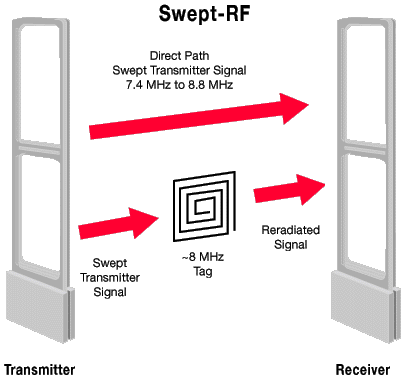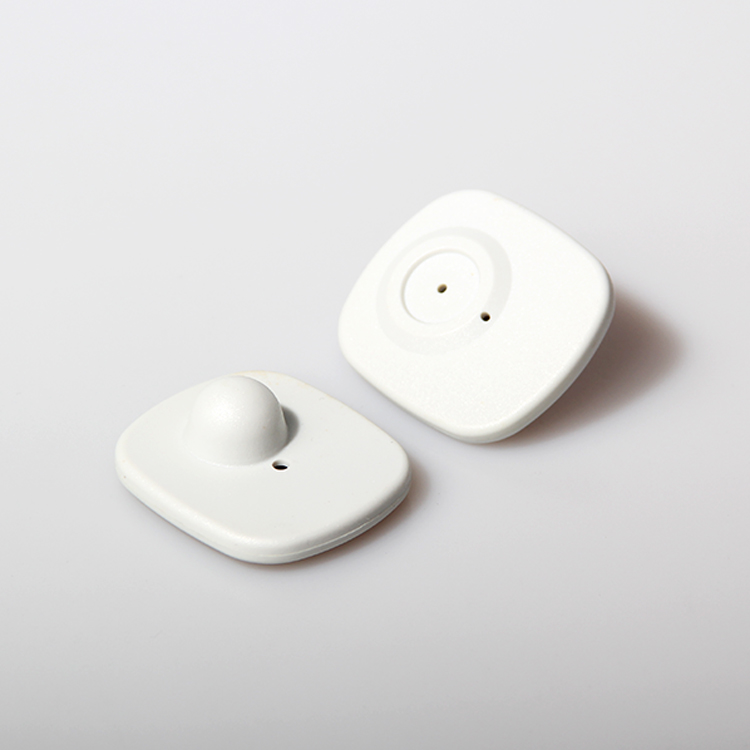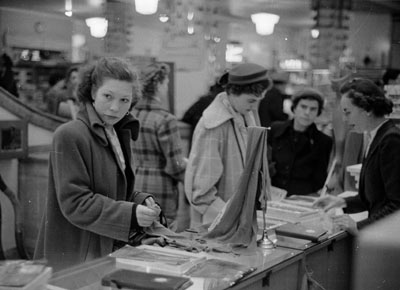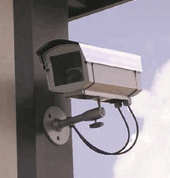Product Category
Contact Us
News
-
Radio Frequency Systems
How Anti-shoplifting Devices Work (4) Radio Frequency (RF) Systems are the most widely used systems in the United States today and RF tags and labels are getting smaller all the time. As you can see in the drawing at the right, the RF EAS system works like this: A label — basically a miniature, disposable electronic circuit and antenna — attached to a product responds to a specific frequency emitted by a transmitter antenna (usually one pedestal of the entry/exit gate). The response from the label is then picked up by an adjacent receiver antenna (the other pedestal). This processes the label response signal and will trigger an alarm when it matches specific criteria. The distance between the two gates, or pedestals, can be up to 80 inches wide. Operating frequencies for RF systems generally range from 2 to 10 MHz (millions of cycles per second); this has become standard in many countries. Most of the time, RF systems use a frequency sweep technique in order to deal with different label frequencies. Sometimes both the transmitter and receiver are combined in one antenna frame — these are called mono systems and they can apply pulse or continuous sweep techniques or […]
-
Electronic Article Surveillance
How Anti-shoplifting Devices Work (3) Security experts say the most effective anti-shoplifting tools these days are CCTV and the tag-and-alarm systems, better known as electronic article surveillance (EAS) systems. Separately, these are good options. Used together, experts say, they’re almost unbeatable. EAS is a technology used to identify articles as they pass through a gated area in a store. This identification is used to alert someone that unauthorized removal of items is being attempted. According to the Association of Automated Identification Manufacturers, over 800,000 EAS systems have been installed worldwide, primarily in the retail arena. EAS systems are useful anywhere there is an opportunity for theft of items of any size. Using an EAS system enables the retailer to display popular items on the floor, where they can be seen, rather than putting them in locked cases or behind the counter. Loss prevention expert Robert L. DiLonardo, says new EAS technologies are being produced — not only to reduce shoplifting — but also to help increase sales, lower labor costs, speed inventory, improve stockroom logistics and, one day, to replace inventory record-keeping. But for now, we’ll stick to the role of EAS in battling shoplifting in your imaginary store! Three […]
-
Security Guards and Security Bars
How Anti-shoplifting Devices Work (2) The first option in loss prevention involves the use of deterrents such as security guards, observation mirrors (that allow store clerks to see throughout the store) and closed-circuit television (CCTV) surveillance systems. Most large stores use some combination of these techniques, which were among the earliest tools used to combat shoplifting. Smaller businesses, unable to afford security guards, were able to install video cameras — usually in a prominent place so that shoppers knew they were being watched — to record activity in the store. Later, the retailer could review the tapes, observe shoppers behaving suspiciously (sometimes even stealing) and note the vulnerable displays or areas in the store. The problem with this record-and-review system is that some shoplifters get away with stealing. On the other hand, experts say, the system has merit in that it allows for possible recognition of repeat offenders (something that is prevalent among shoplifters). By reviewing these tapes, the store owner can also learn about theft patterns and get ideas about ways to deal with them. Your imaginary department store would probably use electronic surveillance a bit differently than smaller businesses. You might have security staff monitoring store activity on […]
-
How Anti-shoplifting Devices Work
Let’s imagine for the moment that you own a large department store, and you are having a big problem with shoplifting. (You’re not alone — retail stores lost $26 billion last year to shoplifting!) What are you going to do? You cannot let it continue, because every month your accounting system tells you that you are losing thousands of dollars to theft. It forces you to raise your prices, and that means you have to charge more than the store next door. That can make it very hard to compete, especially if the store next door is successfully discouraging shoplifting. As a retailer focusing on the problem of what’s known in the industry as loss prevention, you basically have three methods at your disposal to slow the shoplifters down: (1) You can watch everyone in the store like a hawk and make sure they don’t steal anything. You can do that using security guards and/or video surveillance systems; (2) You can make things hard to remove from the store by bolting them down, attaching cables, putting things in display cases and behind the counter; (3) You can use a system that attaches special tags onto everything so that an alarm […]




